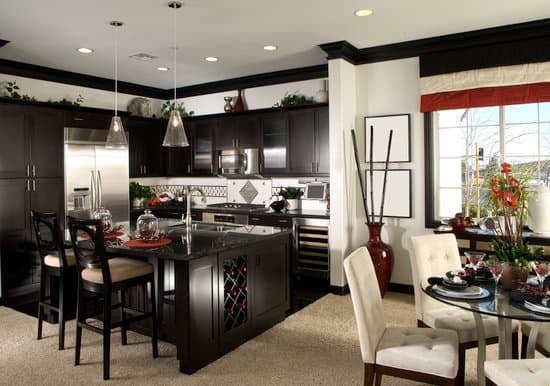Lace, once associated with vintage charm and delicate femininity, is making a comeback in the world of home decor. From curtains to table runners, lace is gracing the rooms of stylish homes, adding a touch of timeless elegance. This article explores the resurgence of lace in interior design and how it has become a choice for those looking to capture an essence of nostalgia in their living spaces.
Throughout history, lace has held a significant place in various cultures around the world. Whether it was used as a symbol of wealth and nobility or as an expression of love and romance, lace has always carried special meaning. Tracing its origins back centuries, we can understand the cultural significance it holds and how it has been intertwined with fashion and design.
In recent years, there has been a noticeable revival of lace in home decor. Designers are finding innovative ways to incorporate this delicate fabric into modern interiors, embracing its romantic allure. Lace curtains filter sunlight gently into rooms, creating a soft ambiance while maintaining privacy. Lace tablecloths add an air of sophistication to dining areas. The intricate patterns and textures give depth and visual interest to any space they adorn.
As homeowners seek unique ways to personalize their living spaces, lace offers versatility unlike any other material. It can be found not only in traditional motifs but also in contemporary designs that appeal to modern aesthetics. Moreover, lace comes in various materials such as cotton or synthetic blends, allowing for different textures and levels of durability depending on the intended use.
With its ability to transform any room into an enchanted haven, lace finds its place throughout the home. From elegant living rooms adorned with lace-trimmed pillows to dreamy bedrooms with lacy canopies above the bed, this fabric brings a touch of luxury wherever it is featured. Bathrooms are not exempt from its grace either; shower curtains lined with delicate lace create a spa-like atmosphere that enhances relaxation.
A Brief History of Lace
Lace has a rich history that dates back centuries, with its origins rooted in intricate handiwork and exquisite craftsmanship. This section will explore the fascinating history of lace and its cultural significance.
The exact origin of lace is unknown, but it is believed to have emerged around the 15th century. Lace-making skills were passed down through generations, often within specific communities or regions known for their expertise. It was initially crafted using delicate threads made from linen, silk, or precious metals such as gold and silver. Lace quickly gained popularity among royalty and nobility, becoming a symbol of wealth and status.
Throughout history, lace has held different meanings in various cultures. In Elizabethan England, for example, lace represented elegance and luxury. It adorned the clothing of both men and women and was seen as a fashion statement.
Lace also played significant roles in religious ceremonies and traditions. In many cultures, it was used to create ornate decorations for altars and religious garments. Even today, some religious customs involve the use of lace in wedding ceremonies or christenings.
| Lace Type | Origin | Cultural Significance |
|---|---|---|
| Bobbin Lace | Flanders (Belgium), Italy | Symbol of wealth; popularized during the Renaissance period. |
| Needle Lace | Italy | Exquisite craftsmanship; used in religious garments. |
| Guipure Lace | Ireland | Traditional Irish craft; associated with Celtic culture. |
As lace-making techniques evolved, different types of lace emerged. Bobbin lace, needle lace, and guipure lace are just a few examples of the various styles that have been developed throughout history. Each type of lace has its own unique characteristics and cultural significance.
Lace Back in Home Décor
Lace has long been associated with elegance, delicacy, and romance. Its intricate patterns and timeless appeal have made it a popular choice in fashion and home decor throughout history. While lace may have had its heyday in the past, it is now experiencing a nostalgic revival in the world of home decor.
The use of lace in home decor can be traced back to the Victorian era when it was used as a luxurious embellishment for furniture, curtains, and bed linens. Lace was considered a symbol of wealth and sophistication, adorning the homes of the upper class. However, as styles changed over time, lace fell out of favor and was replaced by more modern materials.
Nowadays, there is a renewed interest in incorporating lace into interior design. This resurgence can be attributed to several factors. Firstly, there is a growing appreciation for vintage and retro aesthetics, with many homeowners seeking to capture the charm of bygone eras in their living spaces. Lace provides an easy way to add a touch of nostalgia and romanticism to any room.
In addition to its nostalgic appeal, lace also offers versatility in terms of design choices. There are various types of lace available, such as crochet lace, Chantilly lace, or Guipure lace, each with its own unique patterns and textures. This allows homeowners to experiment with different styles and materials when incorporating lace into their home decor. Whether used as window treatments or accent pillows, lace can bring an air of sophistication and refinement to any room.
To capitalize on this trend for nostalgia and elegance, designers and retailers have started offering an array of options for incorporating lace into home decor. From delicate lace curtains that soften windows to plush velvet couches adorned with crocheted lace details – there are endless possibilities for adding this timeless element into your living space.
Current Trends and Designs
Lace, a delicate and intricate fabric, is making a stylish comeback in home décor. Its resurgence in popularity can be attributed to its timeless beauty and the nostalgic appeal it brings to any space. In this section, we will explore the current trends and designs that showcase how lace is making its grand return in the world of interior design.
One of the prevailing trends in lace home décor is the use of lace curtains or window treatments. Lace curtains create an ethereal and romantic ambiance in any room, allowing natural light to filter through while still providing privacy. They are available in various patterns and styles, ranging from traditional floral designs to modern geometric shapes. For those who prefer a more contemporary look, dip-dyed or ombre lace curtains offer a fresh twist on this classic trend.
In addition to window treatments, lace has also become popular as an embellishment on furniture pieces. Lace trims or overlays can add a touch of femininity and elegance to chairs, ottomans, or even headboards. An embroidered lace tablecloth can instantly transform a dining area into a sophisticated space fit for formal gatherings. As for bedding, lace accents on pillows or bedspreads bring a romantic charm to bedrooms.
To keep up with current design trends, some designers have started incorporating lace into unexpected elements of home décor. Lace wall decals can create an interesting focal point on plain walls without being overpowering. Lampshades adorned with delicate lace patterns add texture and visual interest to lighting fixtures. Additionally, homeowners are embracing the trend of using lace-inspired wallpapers as an alternative to traditional wallpaper patterns.
Overall, these current trends and designs demonstrate how lace is making its comeback in home décor by adding a touch of nostalgia and elegance to any space. Whether used as window treatments, furniture embellishments, or unexpected accents throughout the house, incorporating lace into your home décor can bring about a sense of sophistication and timelessness that never goes out of style.
Lace as a Versatile Element
Lace has long been associated with femininity, elegance, and a touch of romance. In recent years, it has made a comeback in home décor, adding a timeless charm to various styles of interiors. From vintage-inspired to modern minimalist designs, lace can be incorporated in different ways to create a unique and sophisticated look.
One of the reasons for lace’s versatility in home décor is the abundance of different styles and materials available. Traditional lace patterns like Chantilly or floral designs are commonly used for a classic look, while more contemporary geometric or abstract patterns can add a modern twist. Lace can be found in various materials such as cotton, silk, or synthetic blends, each offering its own unique feel and aesthetic.
When incorporating lace into your home décor, consider using it as an accent rather than overwhelming the space. For example, you could use lace curtains or drapes to add a soft and delicate touch to your windows. Lace-trimmed pillows or throws can be added to sofas or beds for an elegant touch. You could also use lace table runners or doilies to instantly elevate the look of your dining table.
| Room | Lace Element |
|---|---|
| Living Room | Lace curtains |
| Bedroom | Lace-trimmed bedding |
| Bathroom | Lace shower curtain |
By carefully selecting the style and material of lace that aligns with your overall design theme, you can add an element of sophistication and elegance to any room in your home. Whether you choose to incorporate lace through small accents or larger focal pieces, it is sure to create a unique and timeless look that will never go out of style.
The Sophistication of Lace in Different Rooms
When it comes to home décor, lace is a versatile element that can bring sophistication and elegance to any room. Whether you want to create a romantic atmosphere or add a touch of vintage charm, lace can be the perfect choice. In this section, we will explore how lace can be incorporated into different rooms, including living spaces, bedrooms, and bathrooms.
In living spaces such as the living room or family room, lace can add a touch of sophistication and femininity. One popular way to incorporate lace into these spaces is through curtains or drapes. Lace curtains not only provide a soft and delicate look, but they also allow natural light to filter through, creating an airy and inviting ambiance. Another option is to use lace accessories such as decorative pillows or table runners to add subtle touches of elegance.
In the bedroom, lace can create a romantic and dreamy atmosphere. Bedding with lace accents or lace-trimmed pillowcases can instantly transform your bedroom into a tranquil retreat. You can also consider using lace in window treatments for privacy without sacrificing style. Additionally, incorporating lace into your bedroom decor with items like lampshades or vanity accessories can add an extra layer of charm.
In the bathroom, lace can bring a sense of luxury and refinement. Lace shower curtains or window panels can lend a spa-like ambiance and make your bathroom feel more elegant. You can also find lace trimmings for towels or bath mats to add subtle hints of sophistication.
Overall, incorporating lace into different rooms in your home allows you to create a cohesive design that exudes timeless elegance and beauty. Whether you choose to use it sparingly as an accent or embrace it fully in your décor, the sophistication that lace brings will undoubtedly elevate the aesthetic appeal of every room in your home.
DIY with Lace
Lace has long been associated with elegance and sophistication, but it doesn’t have to come with a hefty price tag. With a little creativity and resourcefulness, you can incorporate lace into your home décor in budget-friendly ways. Whether you’re a crafting enthusiast or just looking for simple ways to enhance your living space, here are some creative DIY ideas using lace.
Lace Curtains
One of the easiest and most popular ways to bring lace into your home is through curtains. You can purchase ready-made lace curtains or even make your own if you’re feeling crafty. Simply attach lace trim to the bottom of plain curtains for an instant touch of elegance. If you already have existing curtains that need a makeover, consider attaching panels of lace fabric to add a delicate and romantic feel.
Lace Stenciling
Another fun DIY project involving lace is stenciling. Use lace as a stencil by placing it on furniture or walls, then spray paint over it to create intricate patterns. This technique adds a unique and personalized touch to any room. Experiment with different colors of paint for contrast or match the stencil color with your existing décor for a more subtle effect.
Lace Lampshade
Give your light fixtures a stylish upgrade by covering the lampshade with lace fabric. This instantly adds a soft and romantic ambiance to any room. Simply cut out pieces of lace fabric in the shape of the lampshade panels and affix them using fabric glue or double-sided tape. For added charm, choose colored lace fabric that complements your existing color scheme.
Lace Trays and Coasters
Add an elegant touch to your coffee table or vanity by creating lace trays and coasters. To make a lace tray, find a plain wooden tray at a thrift store and cut a piece of lace fabric to fit the bottom. Secure the lace using decoupage glue or Mod Podge for a beautiful and functional centerpiece. For lace coasters, simply cut out circles or squares from lace fabric and attach them to corkboard or foam sheets.
By incorporating these DIY ideas into your home décor, you can transform your space with the timeless elegance of lace without breaking the bank. Get creative and experiment with different styles, colors, and patterns to match your personal taste. With these budget-friendly options, anyone can enjoy the beauty and charm that lace brings to a home.
Lace in Modern Minimalism
In recent years, there has been a resurgence of lace in home décor, and one of the most popular ways it is being incorporated is through the concept of modern minimalism. Modern minimalist design focuses on clean lines, simple colors, and open spaces. However, this does not mean that it lacks personality or warmth. By including lace elements, this design style can be infused with feminine touches and add a touch of elegance to any space.
Finding the Balance
One of the key challenges when incorporating lace in modern minimalism is finding the right balance between simplicity and femininity. The goal is to add subtle hints of lace without overwhelming the overall aesthetic of the space. This can be achieved by using lace as an accent rather than a focal point.
For example, instead of covering an entire window with lace curtains, opt for sheer curtains with delicate lace trim at the edges. This allows natural light to filter through while adding a soft touch to the space.
Playful Textures
Another way to incorporate lace in modern minimalism is by combining different textures. Lace can add an interesting layer to smooth surfaces like glass or metal, creating a playful contrast between materials. Consider using lace placemats on a sleek dining table or a lace table runner on a minimalist console table. These small additions will bring depth and texture to the space without compromising its clean aesthetics.
Lace Wall Art and Furniture Accents
In addition to using lace as fabric accents, incorporating lace into wall art pieces or furniture can also create an elegant statement within a modern minimalist space. Lace wall hangings or framed lace panels can serve as artistic focal points and bring intricate details into an otherwise simple room. Similarly, furniture pieces with delicate lace patterns carved into their surfaces offer a unique twist on classic minimalistic design.
By carefully selecting and placing lace elements throughout a modern minimalist space, the balance between simplicity and femininity can be achieved. The addition of lace accents, textures, and artistic pieces can elevate the overall aesthetic of the room while maintaining its clean and uncluttered atmosphere. With these design choices, lace becomes a valuable tool for infusing warmth and elegance into modern home décor.
Lace in Contrast
Combining Lace with Industrial Elements
One of the most intriguing ways to incorporate lace into modern home decor is by creating a striking contrast with industrial materials and textures. Lace brings a delicate, feminine touch to spaces that are known for their raw and rugged appeal. By pairing lace with materials like concrete, metal, or reclaimed wood, you can achieve a unique and captivating look.
For example, in a dining room, you can juxtapose a lace tablecloth with a sleek metal table and industrial-style chairs. This combination creates an interesting dynamic between softness and hardness, resulting in a visually appealing space that showcases both elegance and strength.
Similarly, in the bedroom, you can add lace curtains to windows framed with iron or steel rods. The delicate patterns of the lace beautifully contrast against the strong lines of the metal, creating a harmonious blend of femininity and masculinity in the room.
Mixing Lace with Natural Textures
Another way to create contrast with lace in home decor is by combining it with natural textures such as wood or stone. These materials add warmth and earthiness to spaces, while lace brings gracefulness and sophistication. Together, they create an appealing balance between softness and roughness.
In the living room, you can layer a lace throw blanket over a leather or jute sofa. The combination of smooth leather or rough jute with the intricate patterns of lace adds depth and visual interest to the space.
If you have exposed brick walls or wooden beams in your home, adding lace accents like pillows or decorative wall hangings can soften their rustic appeal while adding a touch of elegance.
Contrasting Textures with Lace Accessories
A simple yet effective way to incorporate contrast into your home decor is by using lace accessories alongside various textures. For example:
- In the bathroom, pair lace bath towels with fluffy cotton bath mats or rattan storage baskets. The softness of the lace complements the plushness of the cotton, while the natural texture of rattan adds an interesting element to the space.
- In the kitchen, use lace-trimmed napkins or placemats with ceramic or glass tableware. The smoothness of these materials contrasts with the intricate patterns of lace, creating a visually pleasing dining experience.
By contrasting textures in this way, you can elevate your home decor by adding dimension and interest to your space. Lace acts as an anchor that brings a touch of elegance and femininity to even the most contemporary and textured elements.
Incorporating lace into your home decor doesn’t mean sacrificing modernity and contemporary style. By pairing lace with other materials and textures that are on trend, you can create a unique and captivating look that combines timeless elegance with modern sensibilities.
Maintenance and Care
Lace is a delicate and intricate fabric that requires special care to preserve its beauty and durability in home décor. Proper maintenance and regular cleaning are essential to ensure that your lace pieces remain in pristine condition for years to come. Here are some tips to help you maintain and care for your lace items:
- Gentle Handwashing: Lace should be hand washed using mild detergent and lukewarm water. Avoid harsh chemicals or bleach, as they can damage the delicate fibers of the lace. Gently swish the lace in the water without rubbing or twisting it, then rinse thoroughly.
- Drying Methods: After washing, it’s important to dry lace properly to avoid stretching or distorting its shape. Lay the lace flat on a clean towel, reshape it if necessary, and let it air dry away from direct sunlight or heat sources. Avoid hanging lace items as this can cause them to stretch.
- Storage Precautions: When not in use, store your lace items in a cool, dry place away from direct sunlight and moisture. To prevent creasing or tangling, gently fold or roll the lace before placing it in a storage container. You can also wrap it in acid-free tissue paper to further protect it.
- Regular Inspection: Periodically inspect your lace pieces for any signs of damage such as tears, loose threads, or discoloration. Promptly address any issues by repairing loose threads with a needle and thread or seeking professional restoration if needed.
- Preventative Measures: To protect your furniture with lace detailing, consider using slipcovers or protective cushions to minimize wear and tear. Avoid placing heavy objects on delicate lace surfaces as this can cause permanent damage.
By following these maintenance and care tips, you can ensure that your lace pieces retain their timeless elegance while adding a touch of sophistication to your home décor for years to come.
Final Thoughts
As we conclude this exploration of the resurgence of lace in home décor, it becomes clear that this delicate fabric has truly made a captivating comeback. From its humble origins and cultural significance, lace has always been associated with elegance and sophistication. And now, it is reclaiming its place as a timeless investment in interior-decorating/” target=”_blank” rel=”follow noopener”>interior design.
The current trends and designs in lace showcase its ability to transform any space into a nostalgic haven. Whether it is incorporated in traditional or more modern styles, lace adds a touch of femininity and charm that instantly elevates the overall aesthetic. It has become a versatile element, available in various styles and materials, allowing homeowners to choose the perfect piece that suits their personal taste.
Beyond its beauty, lace offers practicality as well. It can be integrated seamlessly into different rooms throughout the home, from living spaces to bedrooms and even bathrooms. The sheer versatility of lace allows homeowners to experiment with different applications and combinations, giving each room a unique character while still maintaining a cohesive design theme.
For those who are more budget-conscious or enjoy adding their personal touch to their home décor, DIY projects with lace offer endless possibilities. From lampshades to curtains or even personalized table runners, incorporating lace into these projects not only enlivens your space but also allows for creativity without breaking the bank.
In conclusion, as we witness the resurgence of lace in contemporary home décor trends, it is clear that this timeless fabric has reestablished itself as an elegant staple. With its undeniable charm and ability to effortlessly combine tradition with modernity, lace continues to hold a special place in our hearts and homes. So whether you prefer whimsical vintage vibes or sleek minimalism, don’t hesitate to invest in this beautiful material it will never go out of style.
Frequently Asked Questions
What is the most popular decorating style for 2023?
It is difficult to predict with certainty what the most popular decorating style for 2023 will be, as trends in home decor evolve and change over time. However, based on current observations, it seems that a modern minimalist aesthetic is gaining popularity and could continue to do so in the coming years.
This style embraces simplicity, clean lines, and a focus on functionality. Utilizing neutral color palettes, uncluttered spaces, and a blend of natural materials such as wood, stone, and glass, this decorating style offers a contemporary yet timeless appeal that resonates with many individuals seeking a calm and streamlined living environment.
What is the latest trend in home decor?
The latest trend in home decor revolves around sustainable and eco-friendly design principles. As awareness grows about environmental concerns and our individual impact on the planet, more people are gravitating towards sustainable furniture choices, repurposing old items into new ones instead of discarding them, incorporating energy-efficient elements like smart technology or renewable energy sources into their homes.
Additionally, biophilic design is also gaining traction – bringing nature indoors through the use of plants and natural materials to create a sense of well-being and connection with the outdoors.
What decorating trends are going out of style?
Several decorating trends are gradually fading away as we move into the future. One such trend that is losing appeal is heavy ornamentation and excessive embellishments in interior design. Previously popular styles that incorporated intricate patterns, heavy drapery with elaborate valances or tassels are slowly being replaced by simpler designs that emphasize clean lines and a more minimalist approach.
Similarly, overly matchy-matchy decor schemes featuring perfectly coordinated furniture sets are giving way to more eclectic mixes of different styles and periods. Another trend losing popularity is the concept of oversized furniture; homeowners are opting for more space-efficient options without compromising comfort or functionality to suit smaller living spaces or to create an open layout that promotes natural flow within their homes.

I’m thrilled to be your companion on this exciting journey through the world of home decor and design. With a passion for turning houses into homes and a keen eye for the finer details, I’m here to help you transform your living spaces into beautiful, functional, and meaningful havens.





